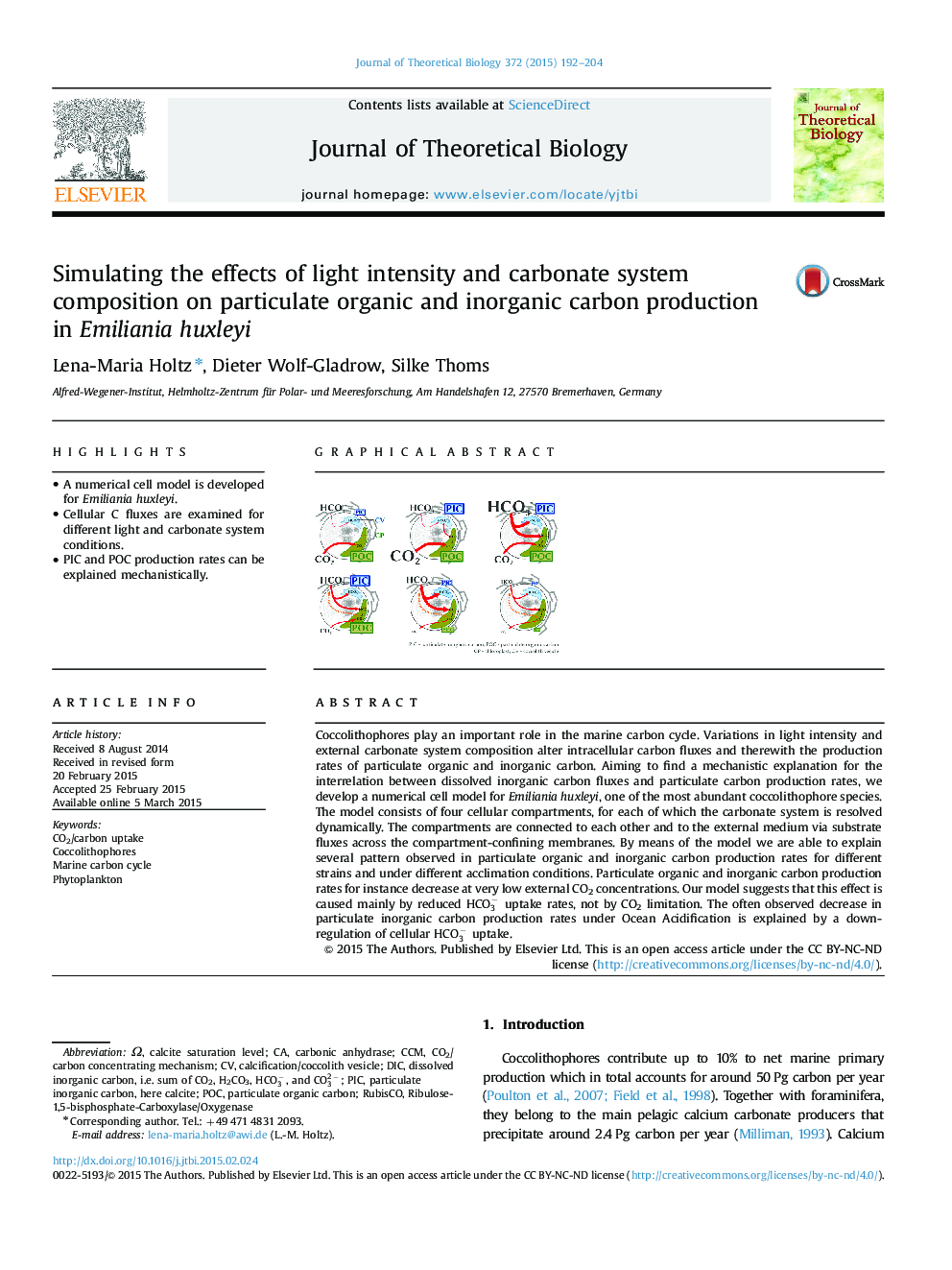| کد مقاله | کد نشریه | سال انتشار | مقاله انگلیسی | نسخه تمام متن |
|---|---|---|---|---|
| 6369839 | 1623838 | 2015 | 13 صفحه PDF | دانلود رایگان |

- A numerical cell model is developed for Emiliania huxleyi.
- Cellular C fluxes are examined for different light and carbonate system conditions.
- PIC and POC production rates can be explained mechanistically.
Coccolithophores play an important role in the marine carbon cycle. Variations in light intensity and external carbonate system composition alter intracellular carbon fluxes and therewith the production rates of particulate organic and inorganic carbon. Aiming to find a mechanistic explanation for the interrelation between dissolved inorganic carbon fluxes and particulate carbon production rates, we develop a numerical cell model for Emiliania huxleyi, one of the most abundant coccolithophore species. The model consists of four cellular compartments, for each of which the carbonate system is resolved dynamically. The compartments are connected to each other and to the external medium via substrate fluxes across the compartment-confining membranes. By means of the model we are able to explain several pattern observed in particulate organic and inorganic carbon production rates for different strains and under different acclimation conditions. Particulate organic and inorganic carbon production rates for instance decrease at very low external CO2 concentrations. Our model suggests that this effect is caused mainly by reduced HCO3â uptake rates, not by CO2 limitation. The often observed decrease in particulate inorganic carbon production rates under Ocean Acidification is explained by a downregulation of cellular HCO3â uptake.
Journal: Journal of Theoretical Biology - Volume 372, 7 May 2015, Pages 192-204